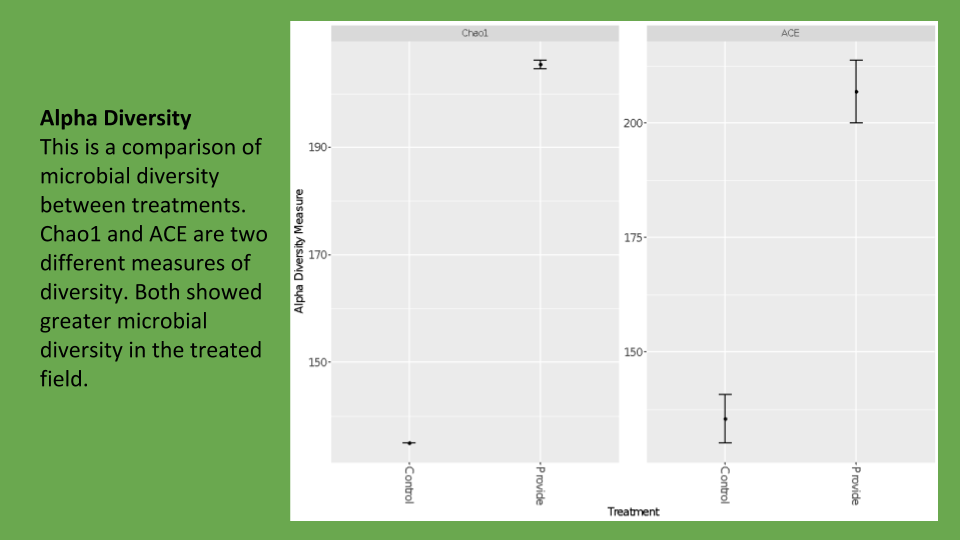DNA Deep Dive on Pasture
At Regenerative Land Solutions, we are always pushing to better understand how managing for biology can benefit producers. If you remember this established alfalfa grass side by side trial, you remember we saw the fungal activity improve with the help of Earthfort’s biological inoculants and bio-stimulants, Provide and Revive. We determined this through Earthfort’s direct microscopy testing, a useful technique for determining general soil balance, activity levels, and natural N cycling. Producers and researchers alike use microscopy testing to establish a baseline and inform their decisions about how to improve their land.
But we wanted to take this trial one step further. We partnered with Montana State University to look deeper at the bacterial community by analyzing it using DNA sequencing. This is what we found:
I am not going to pretend to be an expert at understanding microbial sequencing data, but here are the cliff notes from Professor Jed Eberly: the data suggest the treated field had a greater abundance of potentially beneficial taxa while the control was higher in taxa associated with unhealthy, acidic soils. Overall, the Alpha diversity was higher in the field treated with Provide and Revive than in the control field. There was a high abundance of orders Rhizobiales, Bacillales, and Micrococcales in the treated side. Rhizobiales are an order of gram negative Alphaproteobacteria that contain nitrogen fixing genera such as Rhizobium. Bacillales is an order of bacteria with numerous beneficial genera. In fact, strains of it are often included in inoculants. Micrococcales is an order within the phylum Actinobacteria, whose members are known for their broad metabolic diversity. The control side, on the other hand, had higher abundance of Acidobacteria and Acidimicrobiales. Acidobacteria are a common soil phylum and are often the predominant phyla in acid environments.
This field has always struggled with acidity. It was planted with the same plant species 25 years ago and consistently managed with holistic grazing. Twenty five years of good management didn’t improve the acidity issue, but two treatments of Provide and Revive seem to have tipped the system in a better direction. More research is needed in this field. We are happy to see Montana State University taking on more projects like this and we are excited about our plans for future collaborations.

